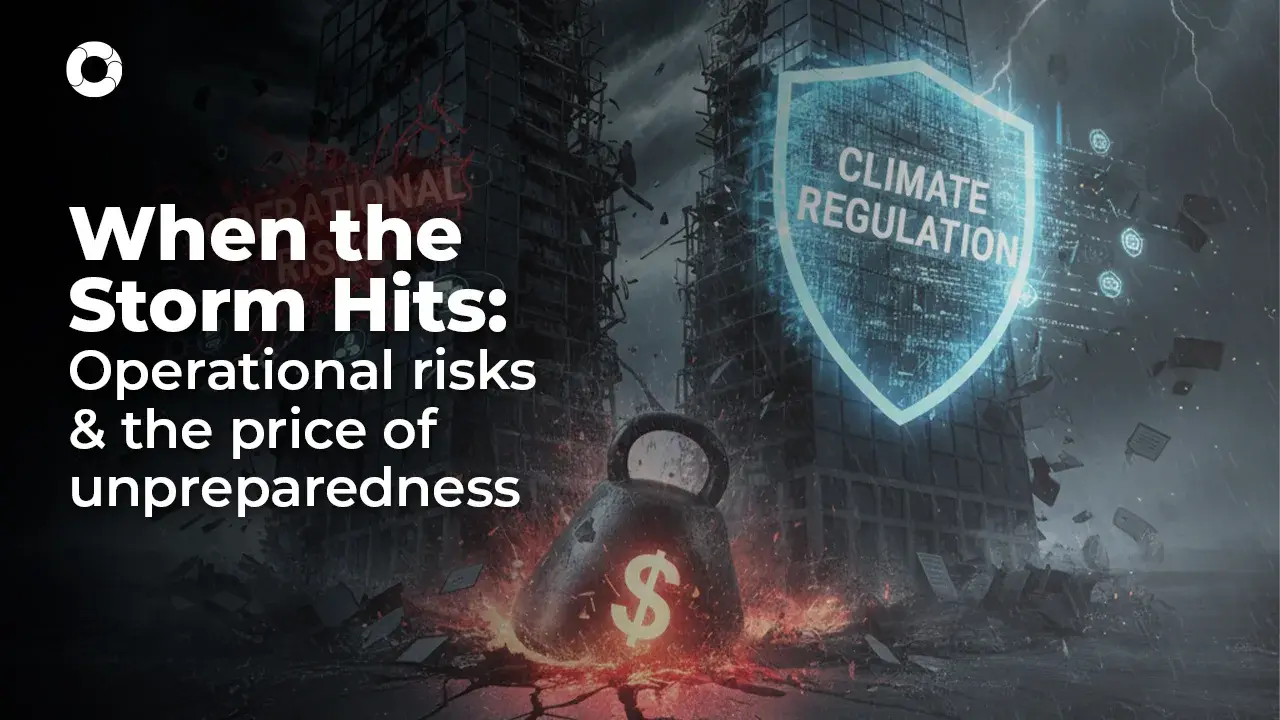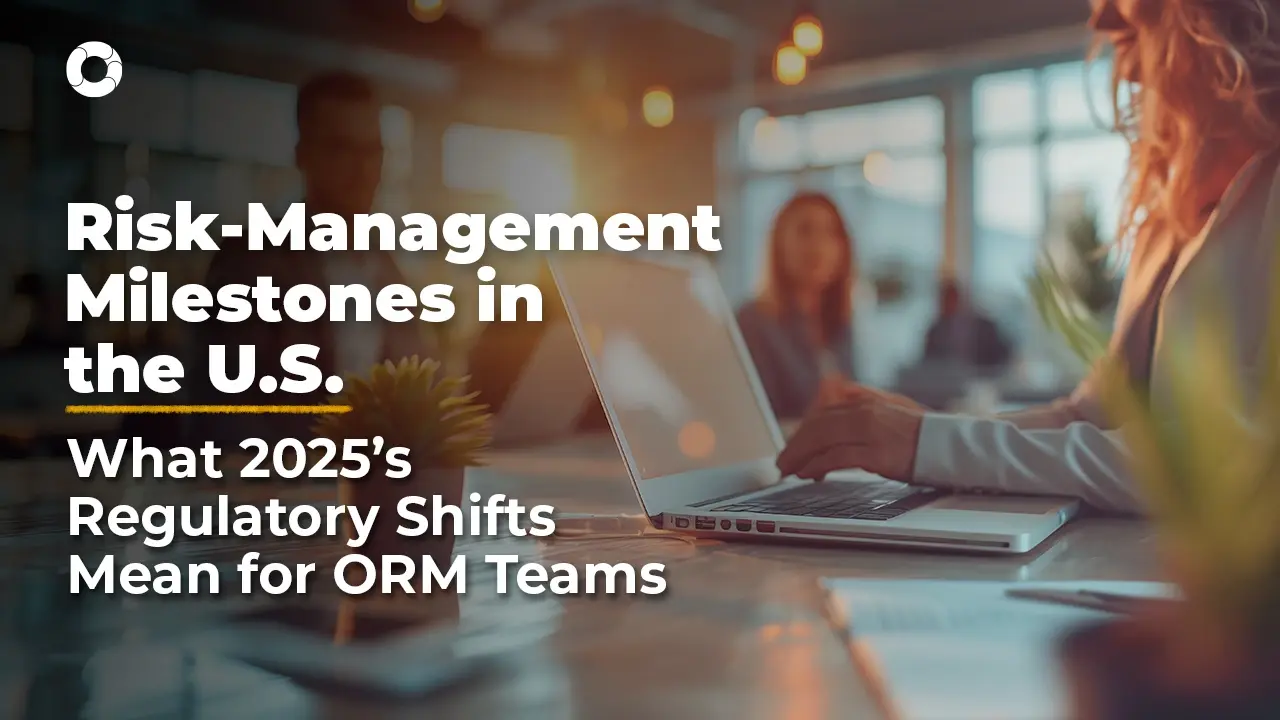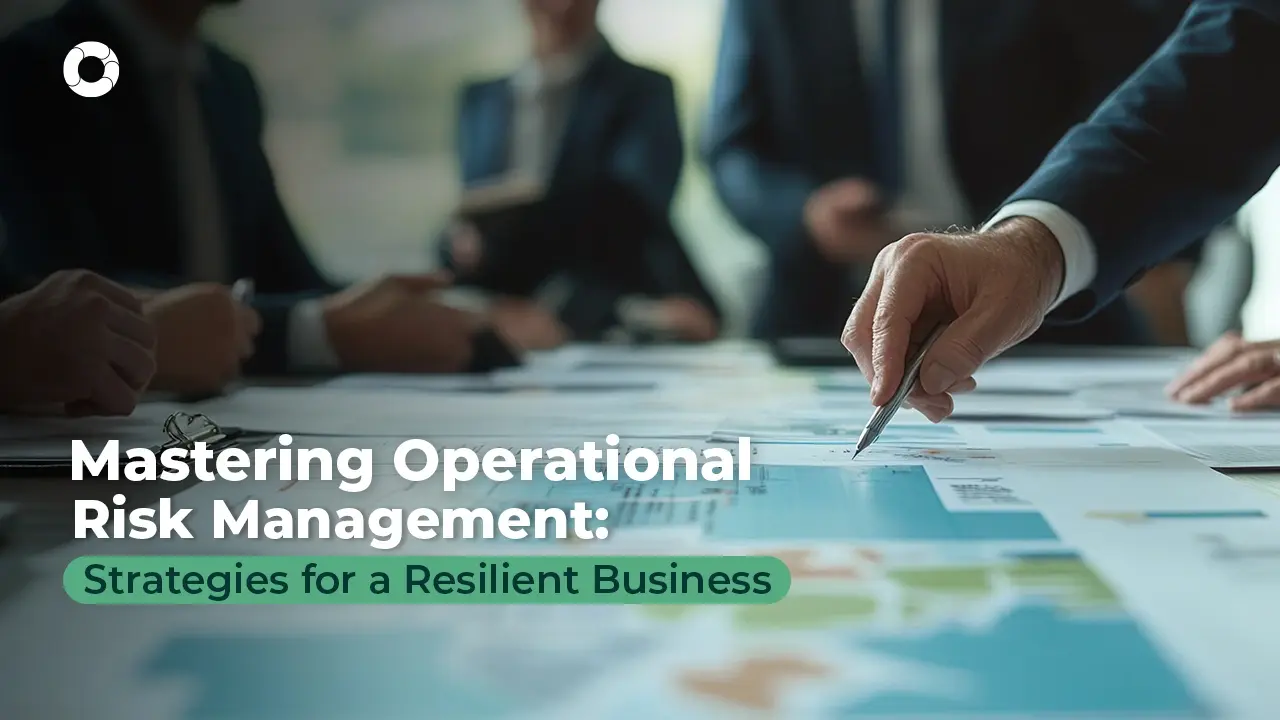Turning Regulatory Change into an Operational Advantage
In 2025, organizations across industries are confronting a surge of regulatory volatility. From the European Union’s AI Act to the U.S. Office of Management and Budget’s (OMB) new policy on AI use, and from evolving ESG disclosure rules to cybersecurity reporting requirements, change has become the constant.
According to KPMG’s 2025 Risk & Regulatory Outlook, this is “the year of accelerated change,” where new laws, enforcement priorities, and cross-border data policies will reshape how organizations manage risk and performance.
This transformation is not just a compliance concern. Each regulatory shift forces updates in processes, systems, suppliers, data management, and internal controls—all elements at the heart of operational resilience. In other words: regulatory change is now an operational risk.

|
Content |
How regulatory change evolves into operational exposure
Every time a new rule emerges, organizations must interpret it, translate it into operational terms, and ensure consistent execution. When that doesn’t happen quickly or coherently, the organization absorbs hidden risks: process disruption, duplicated effort, control failures, or non-compliance penalties.
The Aon Global Risk Management Survey (2025) ranks regulatory and legislative change as the fourth most significant global business risk, emphasizing that “policy volatility reshapes decision-making, resource allocation, and strategic priorities”.
This reality is amplified by overlapping regimes. A financial institution may simultaneously face:
- The EU AI Act requires traceability and human oversight in AI models.
- The Digital Operational Resilience Act (DORA) mandating continuity testing for ICT providers.
- And new U.S. SEC rules requiring near-real-time disclosure of cybersecurity incidents.
Each of these frameworks affects governance, vendor oversight, and reporting structures. Regulatory fragmentation has therefore become a measurable source of operational risk.
The cost of non-adaptation
When compliance functions react slowly, the consequences cascade. The OCC’s 2025 Supervisory Priorities highlight that weak change-management processes and poor integration between compliance and operations have become leading causes of operational losses.
Fines and enforcement are only part of the cost. Organizations incur hidden losses:
- Staff diverted to remediation instead of growth projects.
- Emergency audits and manual control updates.
- Technology patchwork to meet reporting deadlines.
- Reputational damage when compliance lapses become public.
The International Association of Risk and Compliance Professionals (IARCP) notes that the real expense of non-adaptation lies in “operational slowdown and strategic distraction”—a loss of agility that weakens competitiveness. The cost of falling behind is not only regulatory—it’s structural.
Building adaptive compliance frameworks
To move from reactive compliance to proactive resilience, organizations must embed Regulatory Change Management (RCM) inside their enterprise risk architecture.
This is no longer a reporting exercise—it’s a dynamic process that connects regulation, risk, and execution.
An adaptive RCM framework should:
- Centralize obligations – Maintain a unified register of all applicable laws and standards, mapped to business processes and owners.
- Assess impact early – Evaluate how each new rule affects products, data, vendors, and control environments.
- Assign ownership and accountability – Every regulatory requirement should have a named risk owner and documented control.
- Automate monitoring and alerts – Use regulatory-intelligence tools or risk platforms to detect updates in real time.
- Integrate documentation and evidence – Store control testing results, policy updates, and proof of compliance for audits.
As Standard Fusion’s 2025 compliance roadmap puts it, “organizations must become proactive and strategic in their response to regulatory change—embedding governance, workflow automation, and cultural alignment”.
From compliance burden to competitive advantage
When executed well, regulatory change management transforms from cost to capability. Firms that adapt early can:
- Accelerate product launches by anticipating new requirements.
- Strengthen trust with clients and regulators through transparency.
- Reduce remediation costs by integrating change into existing workflows.
- Enhance reputation as resilient, compliant, and well-governed organizations.
This approach aligns with the view of operational resilience: “the ability not only to prevent and adapt to shocks, but to learn and transform through them”.
Ultimately, resilience is not achieved by avoiding regulation—it’s achieved by mastering it.
Regulatory change is no longer a background function. It is a living component of operational risk, demanding continuous attention, automation, and strategic ownership. Organizations that rely solely on manual compliance will find themselves perpetually reacting; those that build adaptive frameworks will transform compliance into an operational advantage.
Resilient organizations are not those with fewer regulations—but those that can evolve with them.
Schedule a demo, to see how adaptive compliance can become part of your operational resilience strategy.
FAQ — Regulatory Change and Compliance Risk
- Why is regulatory change considered an operational risk?
Because each regulatory update forces adjustments in processes, systems, and governance. Poor adaptation can interrupt operations and create losses—just like any other process failure. - What frameworks are shaping compliance in 2025?
The EU AI Act, DORA, SEC cybersecurity rules, and OMB M-24-10 on AI governance are redefining accountability and transparency expectations. - How can organizations stay ahead of regulatory change?
By integrating regulatory intelligence with enterprise risk management, mapping regulations to controls, automating monitoring, and ensuring clear ownership. - What are the hidden costs of non-compliance?
Remediation projects, resource diversion, reputational harm, and operational downtime. - How does proactive compliance create value?
It builds stakeholder confidence, improves agility, and turns regulatory preparedness into a brand asset—aligning risk and performance.
Try Pirani now, create your free account 👇
Want to learn more about risk management? You may be interested in this content 👇
You May Also Like
These Related Stories

When the Storm Hits: Managing Operational and Climate Risks Effectively

AI in Risk Management: From Opportunity to Governance Challenge

Risk-Management Milestones in the US 2025

Mastering Operational Risk for Business Resilience

Difficulties during risk management



No Comments Yet
Let us know what you think